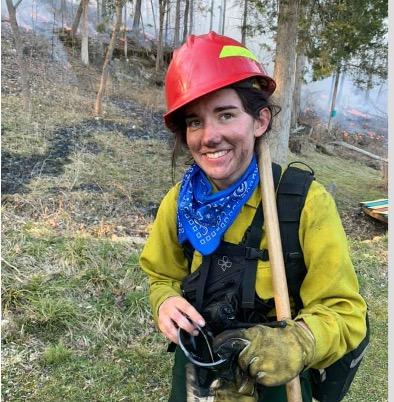Disturbance and Restoration Ecology: Exploring Biological and Human Dynamics
Disturbance and Restoration Ecology: Exploring Biological and Human Dynamics
As scientists, when we study ecology, we study relationships. From a strictly biological sense, we look at relationships between organisms—how they interact, compete, and develop at different scales. We also look at how they interact with abiotic factors like environmental conditions or external disturbances. Humans, of course, are a major part of those relationships in how we create or prevent disturbances, favor certain species or entire ecosystems over others, or even impact one another. Often, we play engineering or managerial roles in ecosystems—that seems true today more than ever. As researchers, we prioritize the study of ecology. As natural resource managers, we prioritize the implementation of what we know about ecology and the observation of ecological response. Thus, the relationships between our researchers and our natural resource managers have a profound impact on how our ecosystems are both understood and managed. In my master’s thesis, I explore the relationship fire—a primarily human driven disturbance both historically and currently—has with woodland flora communities in the Missouri Ozarks. Fire is currently used as a major management tool to restore woodland communities in the Ozarks. I then turn to an exploration of relationships found in collaborations between researchers and natural resource managers working for the USDA Forest Service.
In chapter 1, I examine how herbaceous ground flora, midstory trees, and overstory trees respond to prescribed fire over 20 years in the Missouri Ozarks in three different community types—dry woodlands, dry mesic woodlands, and glades. Historically, fire and climatic conditions primarily drove Ozark woodland and glade community structure. Due to decades of fire suppression, these communities dramatically changed in structure and composition. Previous studies show a reintroduction of fire can have restorative effects on ground flora and the midstories in these communities by reducing midstory tree density, allowing for greater light penetration to the ground layer, and reducing leaf litter accumulation. We show that native herbaceous ground flora increases in richness and abundance, that the midstory declines in density, and that the overstory density also declines in density, with strongest effects mostly occurring in the dry woodlands. Fire management alone can be an effective tool for woodland restoration.
In my second chapter, I explore the dynamics involved in collaborations between researchers and natural resource managers. We surveyed a group of U.S.D.A. Forest Service researchers and natural resource managers involved in ongoing collaborations to determine which elements of partnerships resulted in challenges and which led to success. We followed up surveys with group discussions to develop experience-based solutions for improving research-management collaborations. Relationships, communication, and physical time together building relationships emerged as key elements to successful collaborations.
Committee Members
- Dr. Lauren Sullivan, Chair
- Dr. Manuel Leal
- Dr. Lauren Pile Knapp
- Dr. Dan Dey
Carrie Stephen is currently a Natural Resource Ecologist with Missouri State Parks, housed within the Department of Natural Resources. In her role, she informs and engages in the natural resource management of state parks in Northeast Missouri.

Carolyn Stephen
M.A. Candidate, Sullivan Lab
Division of Biological Sciences
University of Missouri